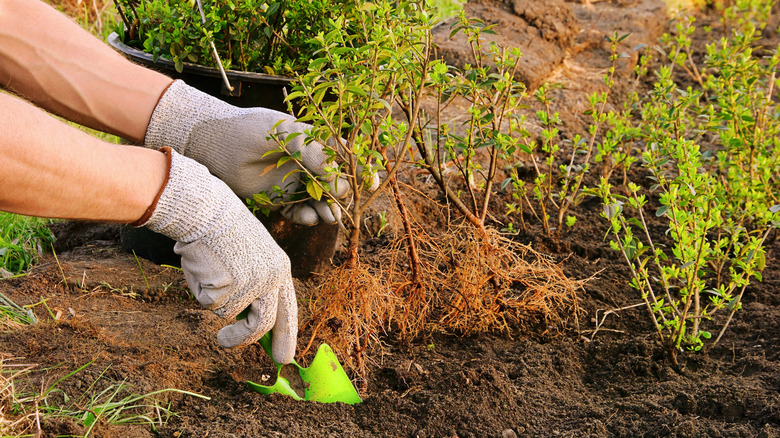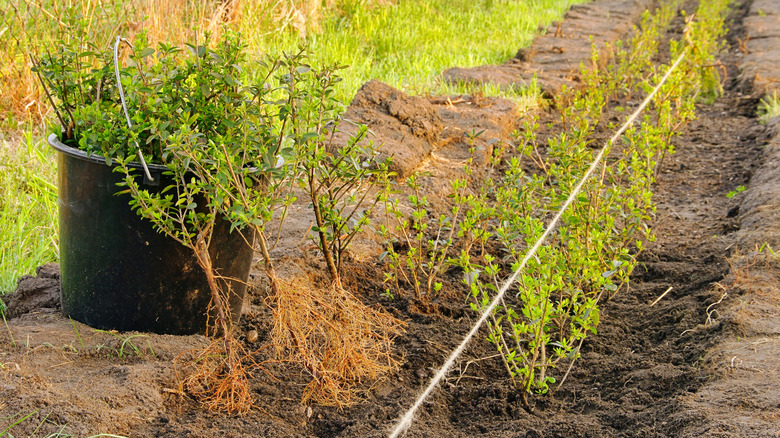Essential Tips For Planting Bare-Root Hedges And Shrubs In The Garden
Have you ever wondered why some hedges and shrubs are sold bare-rooted and if there's a trick to planting them? Bare-rooted plants are often available toward the end of winter, while they're still dormant but when the ground has warmed up enough for you to plant them. They're dug out from their growing site, and then the soil is completely washed off the roots. This makes them easier to ship to customers and more economical to purchase. There are a few essential tips for planting bare-rooted hedges and shrubs, such as hydrating the roots, ensuring the hole is large enough, and watering them in really well. Planting bare-rooted hedges and shrubs is similar to the method for planting bare-rooted trees in your yard.
If you're trying to grow a new hedge, buying bare-rooted plants can save you a substantial amount of money because these will be cheaper than purchasing pot-grown specimens. You should also find that the plants will establish well and you'll end up with uniform growth. While it might take a little longer for your hedge to fill out, the end result will be worth the wait. The same is true for any shrubs you purchase bare-rooted. When you plant them, they'll focus first on creating a solid root system before the top growth develops fully.
Preparing your bare-rooted plants and digging the hole
The most important thing to remember with bare-rooted plants is that the roots must never be allowed to dry out. So, prior to planting them in the ground, it's a good idea to soak the roots of your shrubs and hedges in a bucket of water for around one to two hours. To do this, add some tepid water to the bucket, unwrap the roots of each plant, and carefully submerge them in the water. You should do this just before you're ready to plant, ideally letting them soak while you're digging the holes. This is similar to the simple water trick to try before planting a tree in your yard.
Your planting holes should be wide enough to accommodate the roots without bending them and deep enough so that the base of the trunk is going to be level with the ground. An ideal practice is to dig all of your holes at once if you're planting a hedge so the plants can go straight from the bucket into the ground. This means there's no chance of the roots drying out while you're planting.
Placing the plants in their freshly dug holes
As you place each plant into its freshly dug hole, take particular care that you spread the roots out. A trick that helps with root placement is to mound the soil in the center of the hole so the roots can spread down on all sides of the mounded soil while the base of the trunk sits at ground level. Ideally, you don't want to trim the roots to fit the hole but rather make it large enough to fit them comfortably. However, you can cut away any roots that are broken or damaged.
When ready to plant, take the shrub or hedge plant out of the bucket and position it in the hole as described. Add soil back into the hole until it's half to three-quarters full, and firm it down gently. Now add some water. This will help the soil to settle around the roots and remove any excess air pockets. Once the water bubbles stop coming to the surface, fill the rest of the hole with soil and firm down gently again. Give the soil around the plant another good soaking to really settle it in. Finally, add a layer of mulch about 1 to 2 inches thick around the base of the plant, but ensure you don't pile it up against the trunk.
Now that you're an expert at planting bare-root hedges and shrubs, you might also want to know how to plant bare-root roses.


